Welcome To Doomscroll Theater
(日本語は英語に続く) When I began working on Scenes From a Bad Film: Lived Out in Real Time, I wasn’t interested in crafting another conventional play. I wanted to stage an experience—something that emulates the fractured, divisive condition of our world.
Modern life does not play out in neatly structured arcs. Cathartic resolutions are a rare commodity. Our day-to-day has become a blurred, murky soup of ugly, beautiful, terrifying, stupendous, shameful, inspiring moments.
Storytelling is ever-evolving. From the Greek dramas of Dionysus to the umpteenth reboot of Spider-Man, the needs of the storytellers and the appetites of the audience are constantly shifting. The Hollywood formula is perhaps the most polished, easily digestible story structure we’ve devised, yet even that grows stale. For over a century we’ve gorged ourselves on a hollow diet of relatable heroes, distressed damsels, archetypal villains, and happy endings. This type of narrative fare no longer excites the receptors. But do not fret–something new is on the menu, and it’s a thousand times more addictive than the old formula.
The algorithm can satisfy any craving. It knows you–and what you want. Every minute of every day, on demand and in our hands, it delivers a steady stream of curated randomness tuned to our innermost desires. The stories it offers are bite-sized, protein-packed, and deceptively filling.
Scenes From A Bad Film is built on a “multi-narrative” structure, a form that blends old Hollywood with the new algorithm. Examples include films like Magnolia or Babel, or Caryl Churchill’s play Love and Information. These works interweave multiple, seemingly unrelated storylines until they converge with one another. I wondered whether I could take the form further—adapt it more fully for theater in the digital age.
With the advent of doomscrolling, audiences have trained themselves to engage with multi-narratives. They can follow disparate characters, events, and stories told in rapid bursts with remarkable ease. We no longer need every gap filled in; a century of Hollywood formula has conditioned us to anticipate what came before and what comes next. All we really want are the good bits–the juicy, titillating, dopamine-hitting fragments.
But innovative structure alone does not make a play. I wanted to capture the doom we’re consuming nightly, to give it physical form and bring the inane, mundane, and insane crashing together. The goal was to find the through-line which binds clips of war and famine to cheesecake recipes and cat memes.
In the writing of Scenes From A Bad Film, there were a million different threads to pull, but for practical purposes I limited myself to five: kink, family dysfunction, sexuality and identity, the blue-collar, and drug-use. Weaving these distinct narratives together–each with its own main characters and themes–was more intriguing than challenging. The trick was finding the center. In this tangled web of relationships, lines cross at odd angles yet ultimately converge on a unifying idea. Understanding that core is what makes multi-narratives possible. That same knowledge is what fuels the algorithm, and unleashes its limitless power.
When we accept that nothing happens in isolation, divorce ourselves from the fantasies of Hollywood’s perfect bubbles, and embrace the connectedness of our linked minds, only then can we enter the matrix of this new storytelling era–and evolve with it.
SCENES FROM A BAD FILM
Scenes From a Bad Film has been in production for the past eight months, and I’m incredibly excited to debut it here in Nagoya, Japan. We have a cast of wonderfully talented veterans and newcomers, and I’m deeply grateful to everyone who has embraced this experimental format and helped bring this vision to life. I believe audiences are really going to enjoy it.
Theater in the digital age faces tremendous challenges. I’ve said it many times before, especially in regards to amateur theater, but I do fear it is a dying art. Perhaps this play is one attempt to breathe new life into it—adapting it for an era where entertainment is fought over on streaming platforms, the internet, and the algorithm. Attention has become a precious commodity, and theater must learn to adapt to the ways people now consume stories. I hope this play does its part.
The show is currently sold out, and I am profoundly grateful to everyone who secured their tickets. It means a great deal to me and to Nagoya Players. We could not attempt this kind of boundary-pushing theater without your support. Hopefully in the future we can bring this show back—or stage a new version—so more people can experience the Doomscroll.
Shawn Mahler
Creative Director, Nagoya Players
Writer, Director, Producer, Scenes From A Bad Film: Lived Out In Real Time
ドゥームスクロール・シアターへようこそ
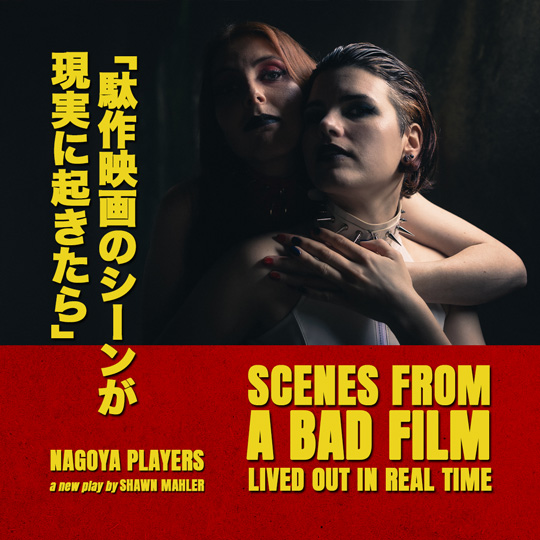
「駄作映画のシーンが現実になったら」の制作を始めた時、私は従来型の戯曲を作ることには興味がありませんでした。目指したのは一つの「体験」を舞台上に立ち上げること――分断され、引き裂かれた私たちの世界の姿を映し出すような体験です。
現代の生活は、きれいに構成された筋書きに沿って進むものではありません。カタルシス(ネガティブな感情が解放され浄化されること)に満ちた解決は稀有であり、私たちの日常は、醜く、美しく、恐ろしく、壮大で、恥ずかしく、そして鼓舞するような瞬間が入り混じった、濁ったスープのようなものです。
物語は常に進化しています。ディオニュソスのギリシャ悲劇から、何度目か分からないスパイダーマンのリブート(再制作)に至るまで、語り手の欲求と観客の欲望は常に変化し続けてきました。ハリウッド式の物語構造は、おそらく最も洗練され、消化しやすいものとして完成されてきましたが、それでさえやがて陳腐化します。百年以上もの間、私たちは共感できるヒーロー、窮地のヒロイン、典型的な悪役、そしてハッピーエンドという「空虚な食事」に飽食してきました。もはやそのような物語では感覚は刺激されません。しかしご安心ください――新しいメニューが用意されています。それは旧来の公式の千倍も中毒性のあるものです。
アルゴリズム(問題解決の処理方法)はあらゆる欲求を満たします。あなたを知り、あなたが望むものを知っています。毎日、毎分、私たちの手元に、私たちの内なる欲望に合わせて調整された「厳選されたランダムさ」が途切れることなく流れ込みます。その物語は一口サイズで、栄養が詰まっていて、 見た目や表面上の印象とは異なる本質を隠しているのです。
「駄作映画のシーンが現実になったら」は「マルチナラティブ構造」(語り構造)に基づいています。これは古典的ハリウッドと新しいアルゴリズムを融合させた形式です。映画『マグノリア』や『バベル』、キャリル・チャーチルの戯曲『Love and Information』などがその好例です。これらの作品は、一見無関係に見える複数の物語を織り交ぜ、やがて一つに収束させていきます。私はこの形式をさらに発展させ、デジタル時代にふさわしい演劇へと適応させられないかと考えました。
ドゥームスクロール(インターネットでネガティブな情報を延々と閲覧し続けること)の時代が到来し、観客はすでにマルチナラティブに慣れています。断片的なキャラクターや出来事を、怒涛のように浴びせられても、驚くほど容易に追いかけることができるのです。私たちはもはや隙間を埋めてもらう必要はありません。ハリウッドの公式を百年も浴び続けた結果、前後の文脈を自ら予測できるようになっているのです。私たちが本当に求めているのは「おいしい部分」――官能的で、興奮を誘い、ドーパミンを直撃する断片なのです。
しかし、革新的な構造だけでは演劇は成り立ちません。私は、夜ごとに消費している「破滅の感覚」を舞台上に具現化し、くだらないもの、日常的なもの、狂気的なものを一気に衝突させたいと考えました。戦争や飢饉の映像とチーズケーキのレシピ、そして猫のミームをつなぎ止める一本の糸――それを見つけることが目標でした。
「駄作映画のシーンが現実になったら」を書くにあたり、引ける糸は無数にありましたが、実際には五つのテーマに絞りました。すなわち、性的興奮を引き起こす「フェティッシュ」や「家族の崩壊」「セクシュアリティとアイデンティティ」「労働者階級」「薬物使用」です。これらの異なる物語を織り交ぜることは、困難というよりむしろ魅力的な挑戦でした。肝心なのは中心を見出すことです。このもつれ合う関係性の網の中で、線は奇妙な角度で交差しつつも、最終的には一つの核心に収束します。その核心を理解することこそ、マルチナラティブを可能にするのです。そして、その知識こそがアルゴリズムを駆動させ、無限の力を解き放ちます。
孤立の幻想を捨て、ハリウッドの完璧な泡から自らを解き放ち、私たちの心が繋がり合っていることを受け入れたとき、初めて私たちは新しい物語時代の「マトリックス」(基盤)に足を踏み入れ、共に進化できるのです。
「駄作映画のシーンが現実になったら」
「駄作映画のシーンが現実になったら」は過去8か月にわたり制作を続けてきました。そしていよいよ名古屋で初演できることに、心から胸を躍らせています。経験豊富なベテランと新しい才能が集まった素晴らしいキャストに恵まれ、この実験的な形式を受け入れ、共にビジョンを実現してくれたすべての人に深く感謝しています。観客の皆さんにもきっと楽しんでいただけると信じています。
デジタル時代の演劇は大きな困難に直面しています。以前から何度も言ってきましたが、特にアマチュア演劇においては、この芸術が衰退しつつあるのではないかという恐れを抱いています。この作品は、もしかするとその演劇に新しい命を吹き込む一つの試みなのかもしれません。配信プラットフォームやインターネット、そしてアルゴリズムが覇権を争う時代に適応するための挑戦です。注意力が貴重な資源となった今、演劇もまた人々が物語を消費する新しい方法に適応していかねばなりません。この作品がその一助となることを願っています。
公演は現在すべて完売となっており、チケットを手にしてくださった皆さまに心から感謝申し上げます。これは私にとっても、名古屋プレイヤーズにとっても大きな意味を持っています。皆さまのご支援なしには、このような挑戦的で革新的な演劇を実現することはできませんでした。今後、再演や新しいバージョンを上演し、より多くの方々にこの「ドゥームスクロール」を体験していただけることを願っています。
ショーン・マーラー
名古屋プレイヤーズ クリエイティブ・ディレクター
「駄作映画のシーンが現実になったら」
脚本・演出・プロデューサー
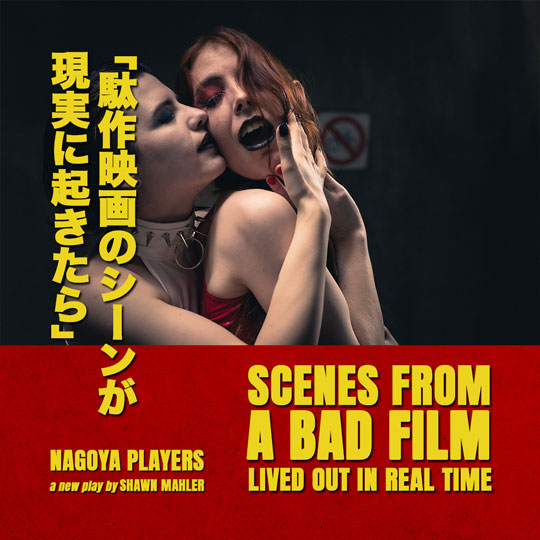
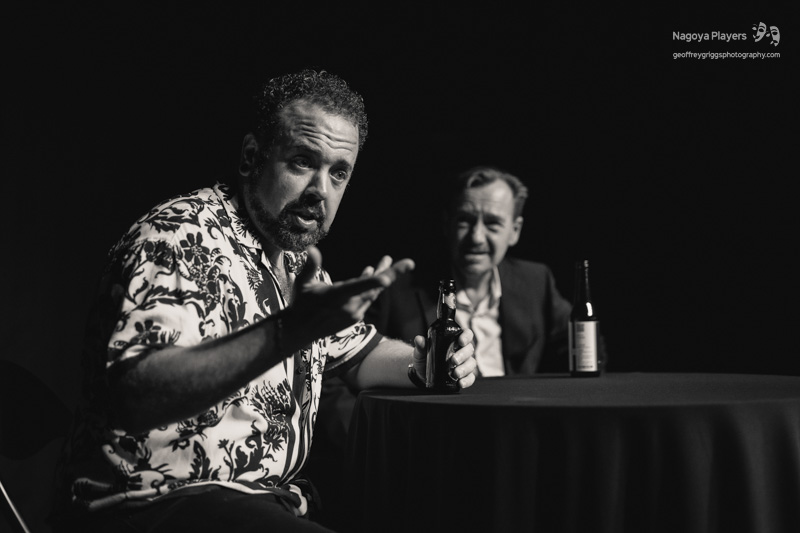
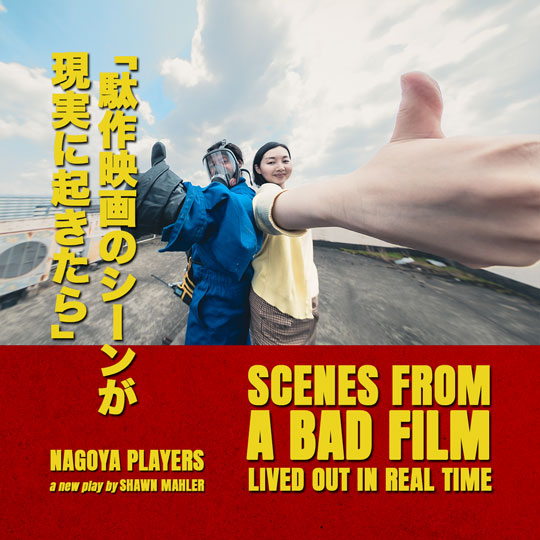
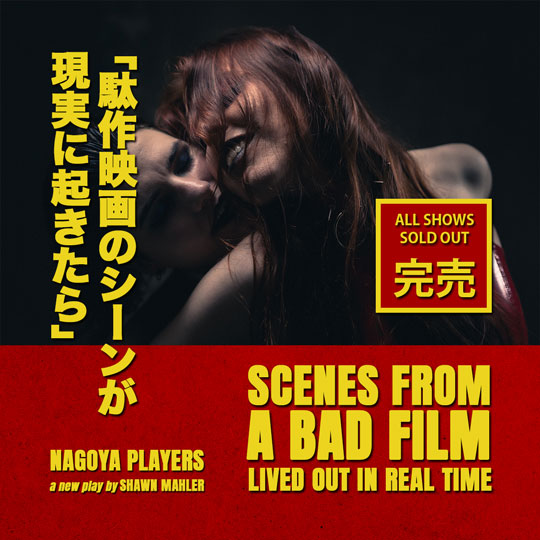
About the author